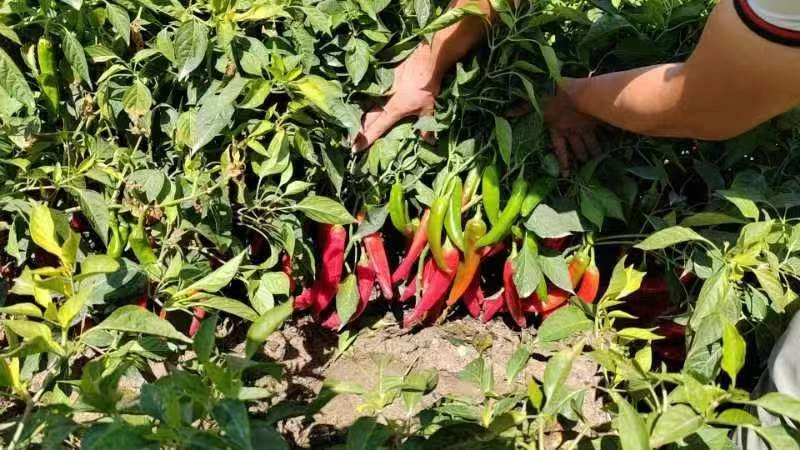- No. 268 Xianghe Street, Economic Development Zone of Xingtai city, Hebei 054001 China
- Byron@hbhongri.cn
Exploring the Flavors of Pepper Varieties Paprika and Capsicum
The Culinary and Cultural Significance of Paprika and Capsicum
Paprika and capsicum are two terms that evoke a vibrant spectrum of flavors, colors, and culinary traditions. While often used interchangeably in casual conversation, they refer to distinct yet related components of the Capsicum genus, which includes various species of peppers. This article explores the cultural significance, health benefits, and culinary applications of paprika and capsicum, shedding light on their importance in global cuisine.
Understanding Capsicum
Capsicum is a genus of flowering plants, commonly known as peppers. It includes a variety of species, such as bell peppers, chili peppers, and the spices we recognize as paprika. Native to the Americas, capsicum has become a staple in cuisines worldwide, celebrated for its diverse flavor profile ranging from sweet to fiery hot. The versatility of capsicum allows it to be used in countless forms—fresh, dried, or ground—making it an essential ingredient in a variety of dishes.
Bell peppers, a popular member of the capsicum family, are known for their mild flavor and crunchy texture. They come in various colors, including green, red, yellow, and orange, each offering a different taste experience. On the other hand, hotter varieties, such as jalapeños and habaneros, provide a spicy kick that enhances the depth and complexity of dishes, from salsas to stir-fries.
The Art of Paprika
Paprika is a spice made from ground capsicum, typically sweet red peppers. Originating from Hungary and Spain, paprika is distinguished by its unique flavor and vibrant red color, ranging from sweet and mild to hot and smoky. The production of paprika involves sun-drying the peppers and grinding them into a fine powder. This process not only concentrates the flavor but also contributes to the rich color that paprika is known for.
Culinary uses of paprika are as varied as its flavor profiles. It can be sprinkled over deviled eggs, mixed into sauces, or used as a seasoning for roasted meats and vegetables. In traditional Hungarian cuisine, paprika is a key ingredient in goulash and other stews, lending a characteristic warmth and color. Spanish cuisine also highlights paprika in dishes like paella and chorizo, where its smoky undertone plays a vital role in flavor development.
paprika and capsicum

Health Benefits
Beyond their culinary contributions, both capsicum and paprika offer significant health benefits. They are rich in vitamins A, C, and B6, as well as various antioxidants that can promote overall health. Capsicum contains capsaicin, a compound known for its pain-relief properties and potential metabolism-boosting effects. Studies have suggested that capsaicin may aid in weight management by enhancing fat oxidation and reducing appetite.
Paprika, in addition to its flavor, is known for its anti-inflammatory properties and potential benefits in promoting heart health. The carotenoids in paprika can aid in reducing oxidative stress and inflammation, contributing to improved cardiovascular function.
Cultural Symbolism
In many cultures, capsicum and paprika hold symbolic significance beyond their gastronomic uses. In Hungarian cuisine, paprika is not just a spice; it represents national identity and pride. Festivals celebrating paprika are held, showcasing its importance in the local economy and culture. In Spain, the use of smoked paprika (pimentón) is a point of cultural heritage, highlighting regional differences and cooking styles.
Conclusion
Paprika and capsicum are integral to our culinary landscape, providing a rich source of flavor, nutrition, and cultural identity. Their versatility allows for creative expression in the kitchen, transforming ordinary dishes into extraordinary experiences. Whether you're sprinkling paprika on a classic dish or biting into a fresh bell pepper, you are partaking in a global tradition that spans centuries and continents. The vibrant colors and diverse flavors of paprika and capsicum not only enhance our meals but also connect us to the cultural tapestry that continues to evolve as we explore the world through food.
-
Turmeric Rhizome Powder: A Golden Treasure from Roots to TableNewsJul.28,2025
-
The Versatile Application Of Crushed Red Hot Peppers: Lighting Up The Red Flames On The Dining TableNewsJul.28,2025
-
The Paprika: A Touch Of Vibrant Red In Color, Flavor, And CultureNewsJul.28,2025
-
Ground Turmeric: A Modern Examination of an Ancient SpiceNewsJul.28,2025
-
Capsicum Liquid Extract: Features, Applications, and ChallengesNewsJul.28,2025
-
Application of Capsicum Liquid Extract in FoodNewsJul.28,2025







